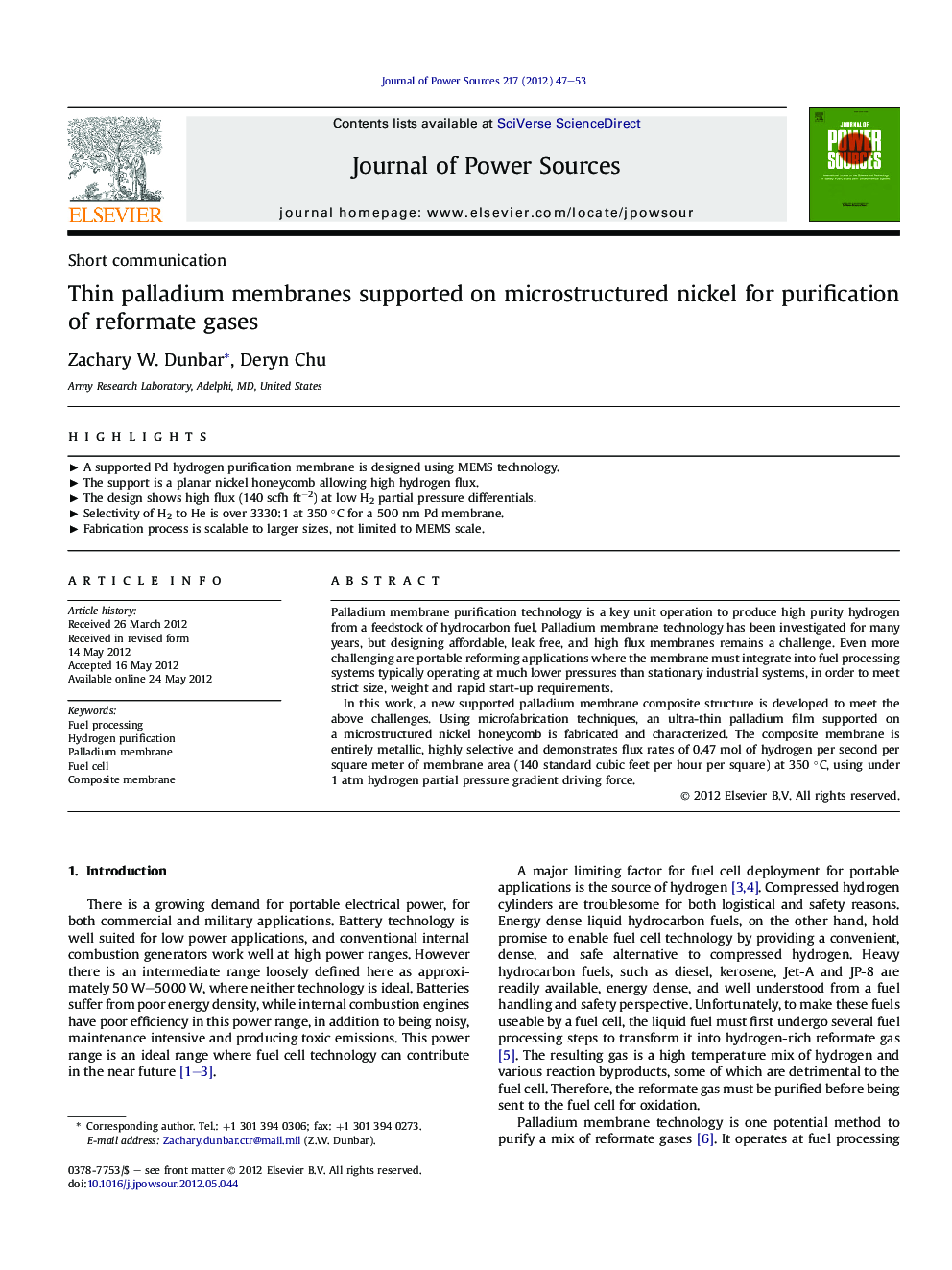| کد مقاله | کد نشریه | سال انتشار | مقاله انگلیسی | نسخه تمام متن |
|---|---|---|---|---|
| 1284442 | 1498015 | 2012 | 7 صفحه PDF | دانلود رایگان |

Palladium membrane purification technology is a key unit operation to produce high purity hydrogen from a feedstock of hydrocarbon fuel. Palladium membrane technology has been investigated for many years, but designing affordable, leak free, and high flux membranes remains a challenge. Even more challenging are portable reforming applications where the membrane must integrate into fuel processing systems typically operating at much lower pressures than stationary industrial systems, in order to meet strict size, weight and rapid start-up requirements.In this work, a new supported palladium membrane composite structure is developed to meet the above challenges. Using microfabrication techniques, an ultra-thin palladium film supported on a microstructured nickel honeycomb is fabricated and characterized. The composite membrane is entirely metallic, highly selective and demonstrates flux rates of 0.47 mol of hydrogen per second per square meter of membrane area (140 standard cubic feet per hour per square) at 350 °C, using under 1 atm hydrogen partial pressure gradient driving force.
► A supported Pd hydrogen purification membrane is designed using MEMS technology.
► The support is a planar nickel honeycomb allowing high hydrogen flux.
► The design shows high flux (140 scfh ft−2) at low H2 partial pressure differentials.
► Selectivity of H2 to He is over 3330:1 at 350 °C for a 500 nm Pd membrane.
► Fabrication process is scalable to larger sizes, not limited to MEMS scale.
Journal: Journal of Power Sources - Volume 217, 1 November 2012, Pages 47–53